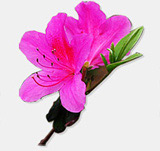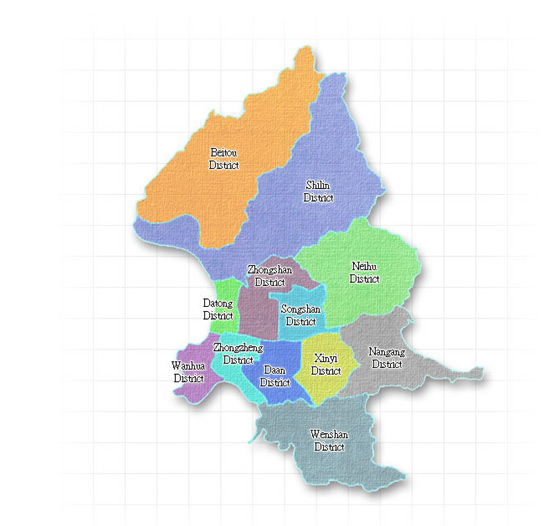Taipei Profile
Population: 2,701,514(till Oct. 2015)
Size: 271.7997 km2
Climate: Semi-tropical
City bird -Formosan blue magpie
 The Formosan blue magpie is an attractive bird that has a scratchy voice. Endemic to Taiwan, the bird has been elected as city bird by Taipei citizens. The bird lives in broadleaf or secondary forests at elevations between 300 and 1,200 meters. The bird travels in flocks with its long, blue and white tail trailing gracefully behind.
The Formosan blue magpie is an attractive bird that has a scratchy voice. Endemic to Taiwan, the bird has been elected as city bird by Taipei citizens. The bird lives in broadleaf or secondary forests at elevations between 300 and 1,200 meters. The bird travels in flocks with its long, blue and white tail trailing gracefully behind.
City flower -Azalea
 The azalea is a vigorous plant that thrives in sun or shade and tolerates both dry and wet conditions. It resists pollution and is therefore particularly suitable for urban areas. The fuzzy hair on the leaves not only regulates water flow but also catches dust.
The azalea is a vigorous plant that thrives in sun or shade and tolerates both dry and wet conditions. It resists pollution and is therefore particularly suitable for urban areas. The fuzzy hair on the leaves not only regulates water flow but also catches dust.
City tree -Banyan
 The bayan tree (Ficus microcarpa) is an evergreen tree with a dense crown that is seen throughout Taipei. It provides shade and absorbs noise. It takes well to frequent pruning and can be easily clipped into all kinds of shapes.
The bayan tree (Ficus microcarpa) is an evergreen tree with a dense crown that is seen throughout Taipei. It provides shade and absorbs noise. It takes well to frequent pruning and can be easily clipped into all kinds of shapes.
Taipei History
Historically, Taipei has always been a place where cultures collide and coalesce. The earliest archaeological evidence of human presence in Taipei was found in the Yuanshan Prehistoric Site (B.C. 5000) and the Zhishanyan Prehistoric Site (B.C. 1000-200). The two sites confirm the early human presence in Taipei and Taipei’s past as a lake. Later, the Ketagalan group belonging to the Pingpu ("Plains") aboriginal tribes began to thrive in areas such as Tamsui, Beitou and Bali.
The Spanish arrived in Tamsui from Keelung and built Fort Provintia (now known as the Hongmao Fort, or "red-topped tower" (red hair castle?). Shortly after, the Dutch invaded south Taiwan and fought for control of the island with Ming Dynasty general Koxinga, who was then stationed in Tainan. After defeating Koxinga’s forces, the Qing government assumed total control of Taiwan.
Southern Chinese immigrants from Quanzhou, Zhangzhou, and Canton began to arrive in Bangka, then Taiwan’s largest port, in search of arable land. They fought constantly with the Pingpu tribe as well as among themselves for territory. These early immigrants built houses and temples that reflected a number of regional architectural styles.
Construction of Taipei City was completed in the late 19th century during Emperor Guangxu’s reign. The historical city gates that we see today were constructed during this period.
Taiwan became a Japanese colony in 1895, after China lost the First Sino-Japanese War. Taiwan remained a Japanese colony until the end of WWII, when the mainland Chinese Nationalist government took over. The influx of Nationalist troops and personnel brought with them mainland Chinese culture to Taiwanese society.
In recent years, increased immigration from Southeast Asia has further contributed to Taipei’s ever more diversified cultural climate.
Taipei Maps
 download map
download map
Adminsistrative Districts
There are 12 administrative districts in the Taipei City, including Songshan, Xinyi, Daan, Zhongshan, Zhongzheng, Datong, Wanhua,Wenshan, Nangang, Neihu, Shilin, and Beitou. Due to the varied topography, economic development and time of development, the population is unevenly distributed. Daan, Songshan and Datong districts are the most populated.
